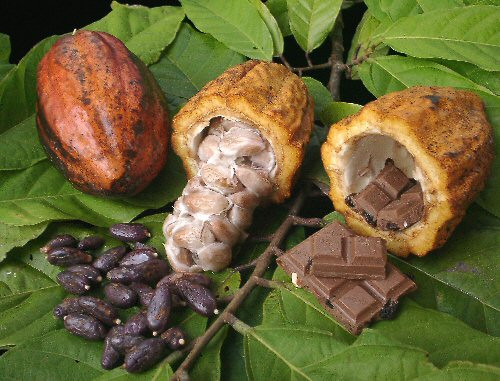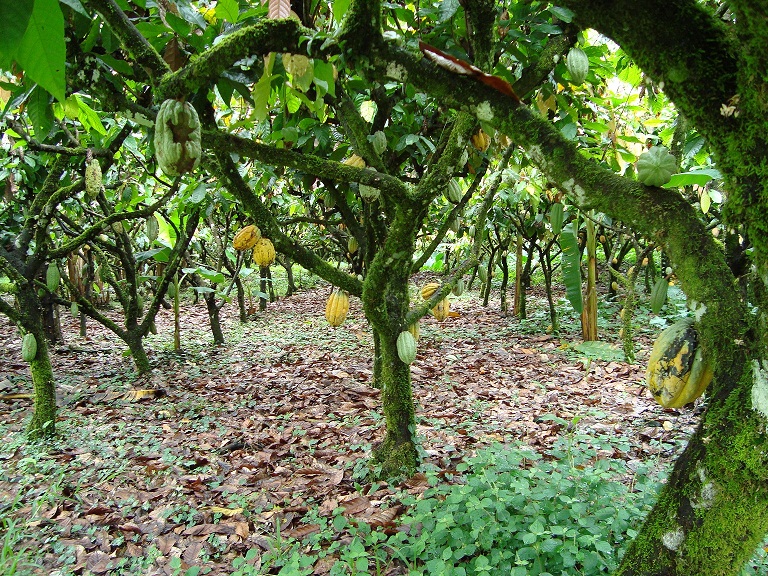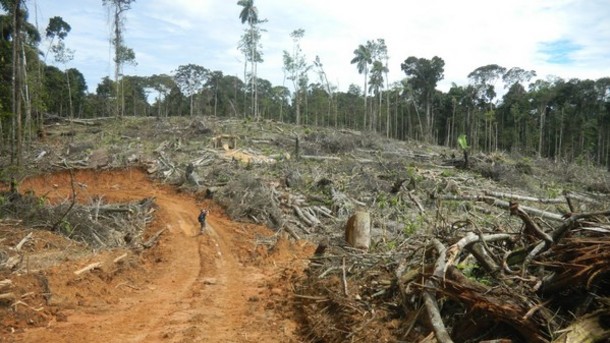
Cocoa production – an introduction
Published by Anne Altor on May 19th 2015
Cocoa, a favorite food and ingredient in personal care items, is a product I use or consume pretty much every day. I'm a huge fan of dark chocolate, and I love using cocoa butter in soaps and lotions. Given the vast scales at which commercial crops are produced, I think it's important to learn about the environmental and social aspects of large-scale agriculture. I've been reading up on cocoa production, and what I've learned is definitely not sweet. Here's a brief introduction…

Cocoa (Theobroma cacao) is grown in tropical environments, with the majority produced in Africa (Ivory Coast, Ghana, Nigeria, Cameroon), Central and South America (especially Ecuador and Brazil), and Indonesia. Cocoa is an important part of the economy in these countries. However, a very poor economic return for farmers combined with extensive destruction of tropical forests for cocoa plantations mean that cocoa production is often highly unsustainable (ICCO, 2007[1]; Bisseleua et al. 2009[2]). The heavy use of fertilizers, insecticides and fungicides on cocoa plantations also leads to large environmental impacts (Ntiamoah and Afrane, 2008[3]).

Jason Clay makes the following points about cocoa cultivation in his book World Agriculture and the Environment[4]:
– Volatility in demand for cocoa creates instability for producers and the environment. When prices are down, farmers convert more forest to plantation in efforts to increase production. In addition, farmers seek income by harvesting valuable trees from shade-grown cocoa systems, thus reducing the biodiversity of these already disturbed ecosystems. When cocoa prices are up, more forest is also cut down to expand production.
– Production of cocoa in shade plantations can help to conserve some habitat and biodiversity. However, shaded cocoa-growing areas are also logged sometimes for their valuable timber. Incentives should be provided to farmers to maintain shaded plantations, and consumers must be willing to pay more for cocoa produced using more sustainable methods.
There is widespread acknowledgement about the social, economic, and environmental problems with cocoa production. However, there is also a lot of interest in creating a more sustainable cocoa industry (worldcocoafoundation.org). Again, our choices about which products to buy have far-ranging impacts on the environment and other humans. Cheap prices don't reflect the true costs of production.
[1] International Cocoa Organization. 2007, June 4. Sustainable cocoa economy: A comprehensive and participatory approach. Paper presented at the Thirteenth Meeting ICCO Offices Consultative Board on the World Cocoa Economy London, UK.
[2] D.H.B. Bisseleua, A.D. Missoup, and S. Vidal, 2009. Biodiversity Conservation, Ecosystem Functioning, and Economic Incentives under Cocoa Agroforestry Intensification. Conservation Biology 23 (5): 1176–1184.
[3] A. Ntiamoah, G. Afrane, 2008. Environmental impacts of cocoa production and processing in Ghana: life cycle assessment approach, Journal of Cleaner Production 16 (16):1735-1740.
[4]J. W. Clay, 2004. World agriculture and the environment: A commodity-by-commodity guide to impacts and practices. Washington, D.C: Island Press.
